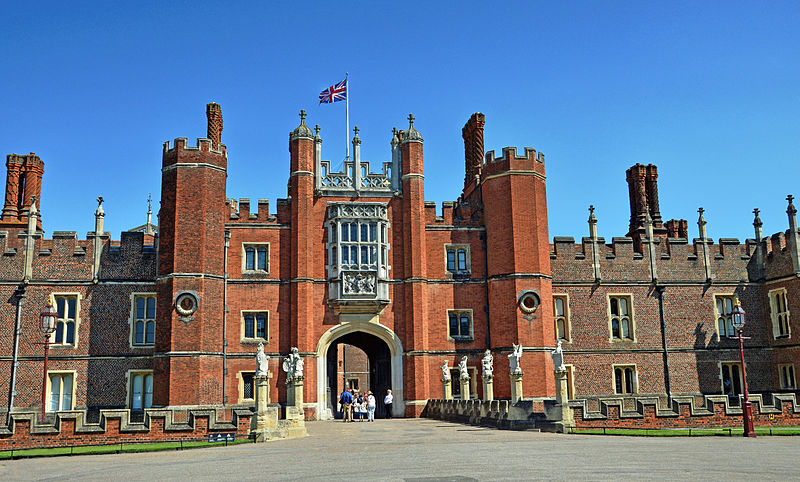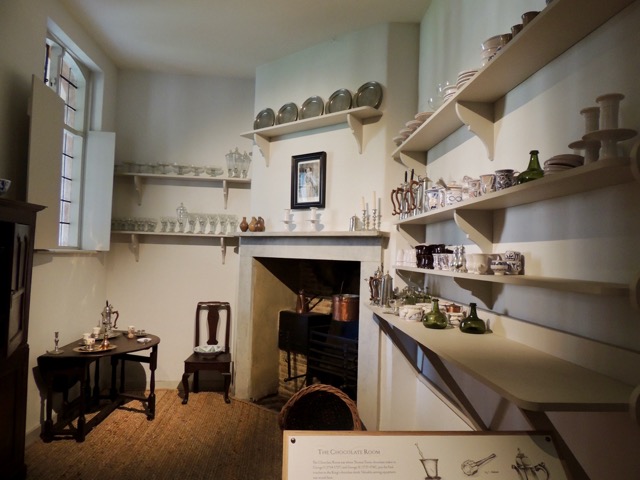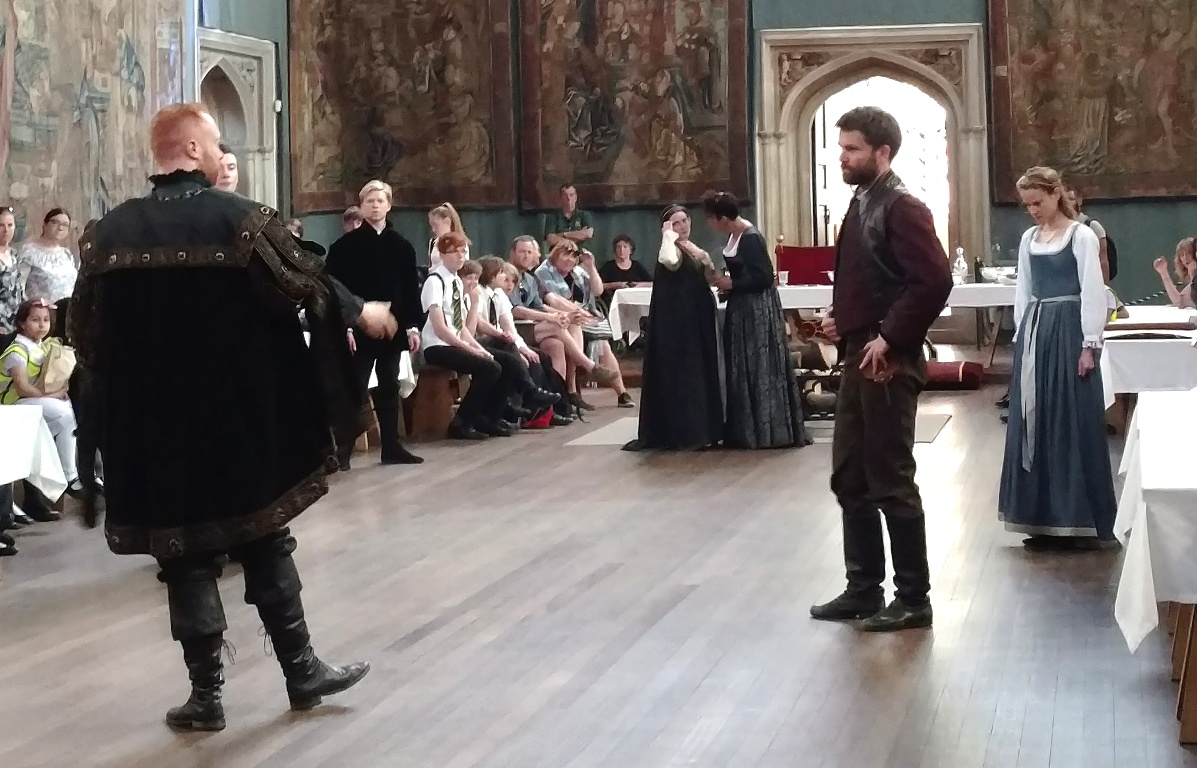Hampton Court Palace
From Londonhua WIKI
Hampton Court Palace
 Hampton Court Palace | |
| Author | Duncan Harris |
|---|---|
| Year | 2012 |
| Location | Molesey, East Molesey, UK |
Overview
Hampton Court Palace is a royal palace that is located in Surrey England. The palace started as a large barn on the manor of Hampton and has now celebrated its 500th anniversary as it focuses on visitors and tourism to celebrate it's rich history.
Contents
Background of the Palace
In 1236 the St. John Jerusalem acquired the Hampton manor and used it as a site to store produce and accounts. During the 14th century, the estate sat conveniently between the two royal palaces at Sheen and Byfleet. This made it the perfect staging post for royal visitors and it had a new building built to reflect its status as a guesthouse. But, when Byfleet was dismantled in the early 1400s, the importance of Hampton Court declines. In order to maintain the property it then was rented out, it’s first tenant the courtier Giles Daubeney. As the area of Hampton became more popular with the royal family Daubeney ended up playing host to Henry VII and his queen a number of times. After he died in 1508 the Hampton Court received its next occupant, Thomas Wolsey. Wolsey was a close friend of the new King Henry VIII and on the rise in the political hierarchy. He ended up building a vast palace complex, transforming the grand private house in a bishop’s palace. He also added a new private chamber for his own use as well as three suites for the new royal family. It was during his time as a tenant in the 1520s that Hampton Court hosted important European delegations, mainly for doing deals and signing treaties that would help improve England’s position in Europe. It was in 1528 Wolsey lost Hampton Curt to Henry VIII after Henry tried and failed to divorce Katherine.
Henry finished his building works at Hampton Court in about 1540, these included tennis courts, bowling alleys, gardens, and kitchens that covered more them 36,000 square feet. When Henry died in 1547 Hampton Court continued to play an important part in the lives of Henry’s 3 surviving children, Prince Edward and his older sisters Mary and Elizabeth. Each of the children used Hampton Court as a place to retreat away from the business of politics in central London. Not much was added to the palace and in 1603 when James I became king of England the palace provided excellent hunting in the park. It also served as a venue for plays, dances, banquets, and court masques. In 1645 Parliamentary troop seized the palace and began to make an inventory of the royal possessions before putting them up for sale. When the monarchy was restored in 1660 Charles II preferred Windsor Castle to Hampton Court but, he did build a new set of lodgings at the southeast corner of the palace for one of his mistresses and her illegitimate children by him. It wasn’t until 1737 that the royal family stopped using the entire palace. After the royal family left Hampton Court the palace and its apartments found another purpose, it was divided for residents who were granted rent-free accommodation due to their great service that had given to the country or crown. In 1838 Queen Victoria ordered that Hampton Court Palace ‘should be thrown open to all her subjects without restriction’. It was also around this time that antiquarians and architects showed increasing interest in the surviving parts of the historic Tudor palace. Between 1838 and 1851 about £7,000 a year was spent on restoration. In the 1970s and 1980 more exhibitions were introduced to the State Apartments, but it was all put on hold in 1986 when a fire severely damaged a large part of the King’s Apartments.
The Gardens
Surrounding the palace on every side, except for the front, are the gardens. The gardens were used to grow vegetables for the kitchen and a retreat for the royals who needed some fresh air. The gardens were turned into a huge tourist attraction for visitors who visit the palace now.
There are three main sections of gardens. The first section is the main garden with a wide open area. It almost seems like a park with how big and open it is. The second section is the semi large garden with beautiful golden fencing. Located around the center of this garden, there are maze like smaller gardens with sculptures surrounded by flowers. At the center of this garden, there is a large fountain and from there people can get a fantastic view of the palace. The last section contains smaller gardens. These gardens seem more private with gorgeous decorations. There are three of these types of gardens with their own unique style. Aside from these main gardens, there are various others dispersed around the palace. To learn more about each specific garden, click here.
Wildlife at Hampton Court Palace
At the Hampton Court Palace there are many gardens to pursue and traverse with a myriad of vegetation ranging from herbs to trees. Due to the fact that there is a variety of plants, there is alo a huge wildlife presence. On the property one can find descendants of King Henry VIII's 300 fallow deer. The gardens also house a number of bird species such as swans, tawny owls, and kestrels. Along with those birds, the estate's line trees attract ring necked parakeets, bats, and jackdaws. In the water one can find eels and along the river band voles, shrews, and grass snakes can be found. The environment around the palace creates a unique ecosystem that brings life to the area.
The Chapel Royal
The Chapel Royal is a part of the Ecclesiastical Household of Her Majesty the Queen. The services in the church are very traditional and the church is still active today, as it has been for the last 500 years. All are welcome to attend daily services at the chapel, as well as services on Sundays and on Holy Days. The chapel was built in the palace in the late 1520s by Cardinal Thomas Wolsey and was later embellished by Henry VIII. It was restored to the original Baroque style by Sir Christopher Wren for William III and Mary II, and Queen Anne. To read more about the Chapel Royal click here
Young Henry VIII Exhibit
The story starts with how Henry did not expect of become King until the death of the older brother Arthur. He became king just before he turned 18 in 1509. He was married to Katherine, who was a Spanish princess, daughter of Isabella I de Castilla and Ferdinand de Aragon II. She was a very strong beautiful graceful catholic woman and the most ideal queen for the people of England. However, she was supposed to marry Henry's brother, but after his death, despite the difference in age, she married Henry and became Queen of England. King Henry VIII raged war against France in 1513 and captured two cities,Tournai and Therouanne, with the help of his ally Maximilian I. Maximilian I was the nephew of the queen and also the greatest emperor and conqueror in Europe at that time. King Henry made Thomas Wolsey the bishop for his role of organizing supplies and money for the war, and he became his most trusted servant during a long time. One of the more notable battles from this time was the Battle of the Spurs. Henry and Maximilian attacked the French while they were trying to get supplies to Therouanne and the French were rumored to have fled so quickly the English could only see the spurs of the French cavalry. By 1520 all the sons and daughters Katherine had with Henry were dead and the only surviving child was their daughter Mary. After 20 years of marriage Henry decided to divorce Katherine to marry Anne Bolyn in order to get a son. He said to believe what is written in Leviticus in the Holy Bible, "If a man is to marry his brother's wife they shall die childless" and even though they already had little Mary, Queen Katherine had not given him a son. When Henry was unable get the approval from the papacy in Rome to divorce Katherine, the Cardinal Thomas Wolsey ended up falling from royal favor and killed himself while in prison, for he was accused of treason to the king.
William III's Apartments
The staircase leading to the apartments is surrounded by the painting 'Victory of Alexander over the Caesars'. The guard chamber showed that William III was a soldier and peacemaker. The walls are lined with 2871 pieces of weapons and armor. This room was run by the Yeoman of the Guard. Adjoining that room is the King's Presence Chamber. This room was used by William III to greet high ranking guests from his throne. He made everyone bow to his throne, even if it was empty. Next door is the Privy Chamber. This room was home to all ambassadorial visits and the most formal occasions. Lining the walls are tapestries of Henry VIII's 'Story of Abraham' and a portrait of the winter queen. To complete the row of rooms are the bed chambers. The great bed chamber acted as a dressing room for the king. Only the most privileged guests where allowed in to watch him get ready for the day. He slept in the Little Bedchamber. The only people allowed to enter this room were guests and the bed chamber staff.
The Palace
The King's Beasts
At the front of the palace are 10 statues of heraldic beasts. These statues represent King Henry VIII and his wife, Jane Seymour's, ancestry. These are unlike the Queen's Beasts in Kew Garden's which represent the genealogy of Queen Elizabeth II. These beasts at the Hampton Court Palace stand watch on the bridge and above the moat of the Palace. They are symbols of protection for the great gatehouse. These beasts are the lion of England, the Seymour lion, the Royal dragon, the black bull of Clarence, the yale of Beaufort, the white lion of Mortimer, the White Greyhound of Richmond, the Tudor dragon, the Seymour panther and the Seymour unicorn.
The Chocolate Kitchen and Room
Right off of the Fountain Court, you will find a rare chocolate kitchen that was used by the personal chocolate maker to King George I and King George II, Thomas Tosier. He made chocolate from 1714-1760. Henry Stubbe stated in The Indian Nectar or a Discourse Concerning Chocolate that, "This is the Royal Chocolate, being the best and most wholesome and which is drunk by the Nobility and Persons of the best rank." In the kitchen, there is a fireplace that was used to roast the cocoa beans. In the chocolate room is where the final touches were made to the King's chocolate drink. Chocolate, being a lot more expensive than coffee or tea was considered a luxury. They would put exotic spices in it and serve it in gold and silver chocolate pots, and they would drink the drink from porcelain cups.
King Henry VII's Kitchens
These kitchens are the largest kitchens in all of Tudor England. They were designed to feed up to 600 guests of the palace twice a day. This operation is larger than most modern hotels and went on without modern technology. The kitchens had multiple Master Cooks, each with a team of Yeoman and Sergeants working for them, who oversaw everything. They annual provision of meat for the Tudor court was about 1,240 oxen, 8,200 sheep, 2,300 deer, 760 calves, 1,870 pigs, and 53 wild boars. This was all washed down with 600,000 gallons of beer.
This massive amount of cooking went as smoothly as it did because of the way the kitchens are set up. First, there is an outdoor hallway with separate rooms to store things like fish that hadn't been cooked yet. This hallway had high walls, so very little sunlight would affect the foods stored there. The next few rooms show where food is prepared and stews are cooked, leading to the main kitchen. The main kitchen had six fireplaces with spit-racks for roasting the massive amounts of meat Henry VII and his court consumed. The dishes would be collected at the far end, close to the great wall, allowing for quick delivery to the dining area.
Additional areas include the cellars, the boiling house, and the pastry house. The palace had three cellars. The first being a wine cellar where 300 casks of wine were stored for the courtiers. Ale was stored in the great cellar, a room with multiple locks for increased security. The sovereigns alcohol was stored in the privy cellar. The boiling house is where meat stock and boiled meat were produced using a copper boiling pot that had a capacity of about 75-gallons. Finally, the pastry house is where sweet and savory pies would be made using a total of four ovens.
The King's Guard Chamber
The king's guard chamber is most noticeable for it's 2,850 firearms that currently decorate it's walls. It underwent a conservation project from 2006-2011 in which all of the arms were removed from the wall inspected and cleaned. This will need to be done every 25 years to ward off corrosion on the original firearms. The display mounts that the firearms are affixed to the wall with are original and the room is believed to be in the same layout as in 1699. In addition the room also contains many other weapons fitting the name "The King's Guard Chamber".
Interactive Exhibits
There are multiple changing interactive exhibits at the Hampton Court Palace. These exhibits bring the history to life and provide an immersive experience for visitors. Many of these activities are included in the general admission tickets. These exhibits include role playing performances and jousting.
Encounters with the Tudors: PowerPlay
This performance is put on each week from Thursday to Monday until August of 2017. The show is set when King Henry VIII and pregnant Queen Anne Boleyn are visiting the palace to inspect it. The show begins in the Great Hall where King Henry VIII and Anne Boleyn have a heated argument where Anne challenges him. It ends with her collapsing on the ground. The performance then splits off into two groups to follow the stories of each of them. King Henry VIII struggles with running a nation and making the right call during a time of conflict. He is unsure of whether he should keep up the fight for Protestantism. Meanwhile, Queen Anne Boleyn is struggling to trust the king. While she loves him, she is upset about him taking mistresses during her pregnancy as was the custom of the time. However, she must learn to trust him and provide the support he needs to make difficult decisions as ruler. The show gives an entertaining and insightful view into the lives of King Henry VIII and Queen Anne Boleyn.
The Future
Throughout the historic royal palace there are black partitions blocking off areas that are under current construction. The largest one is right outside the palace's main entrance.The black wall is blocking Apartment 39 Garden Railings, as it is in the process of 'conserving history'. Workers are currently repairing the railings and re-landscaping the gardens. To keep with the history, the railings are being repainted to their original dark green. There is current archaeological excavations taking place of the foundations to better understand the gardens. Work is being done thanks to the Historic Royal Palaces annual funds program of conservation. The funds are collected from our individual ticket sales since the government offers no funds to maintain the palace.
So well visitors may be disappointed in a blocked area it is the way of conserving the great Hampton Court Palace for years to come.
References
External Links
If appropriate, add an external links section
Image Gallery
- HCP3JacobDupuis.jpg
- HCP2JacobDupuis.jpg
- HCP1JacobDupuis.jpg

